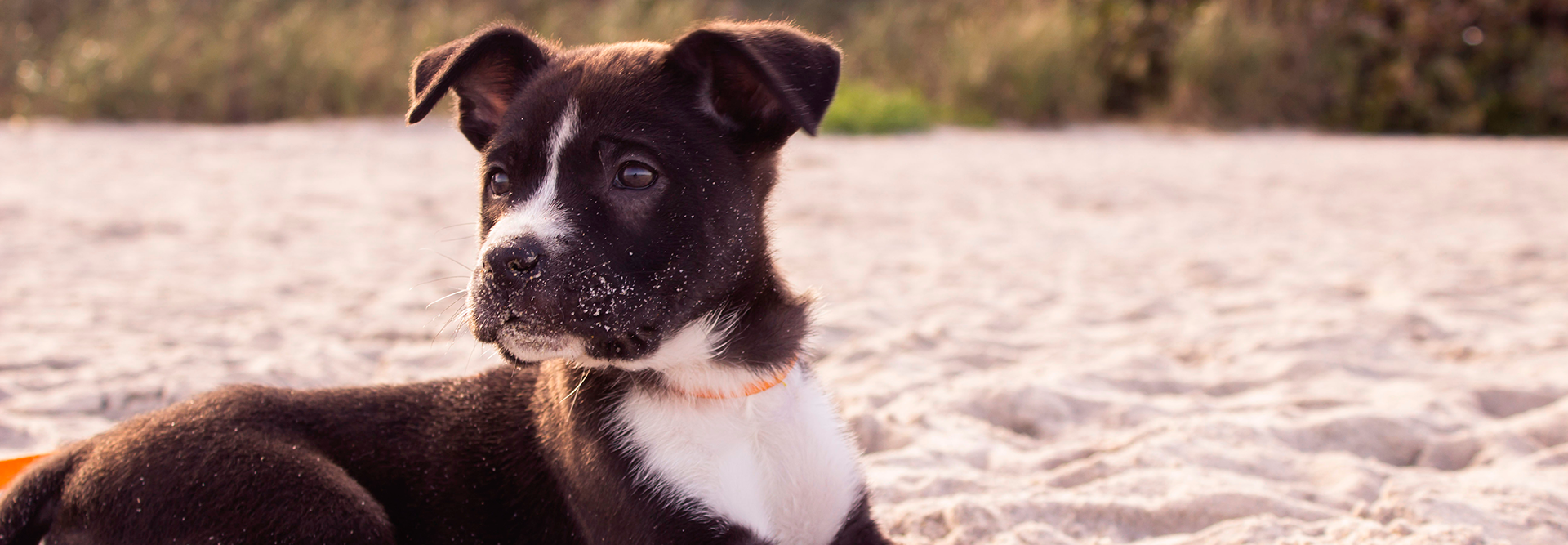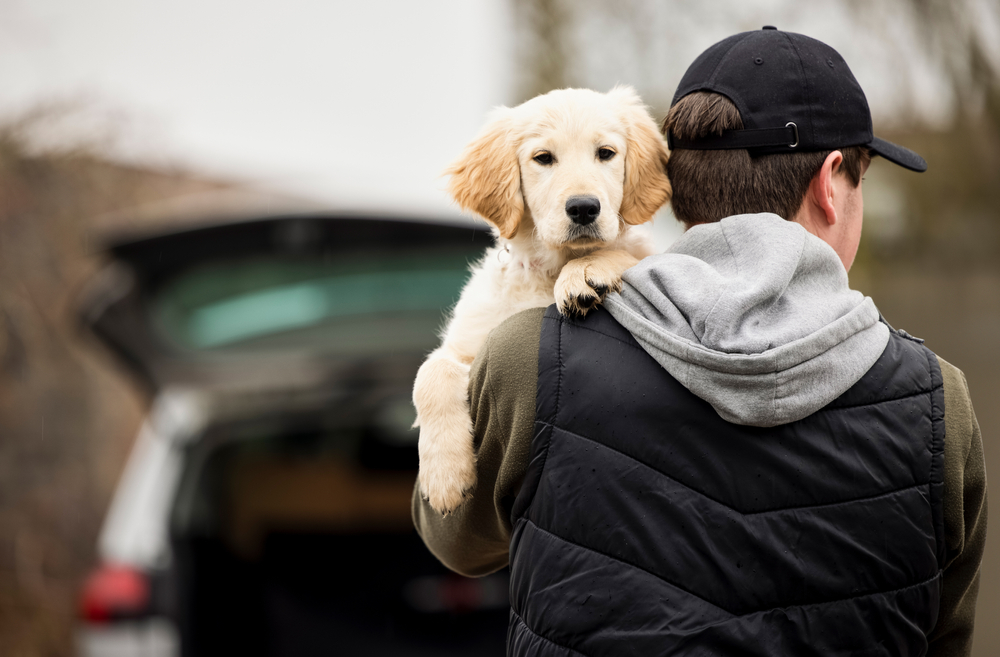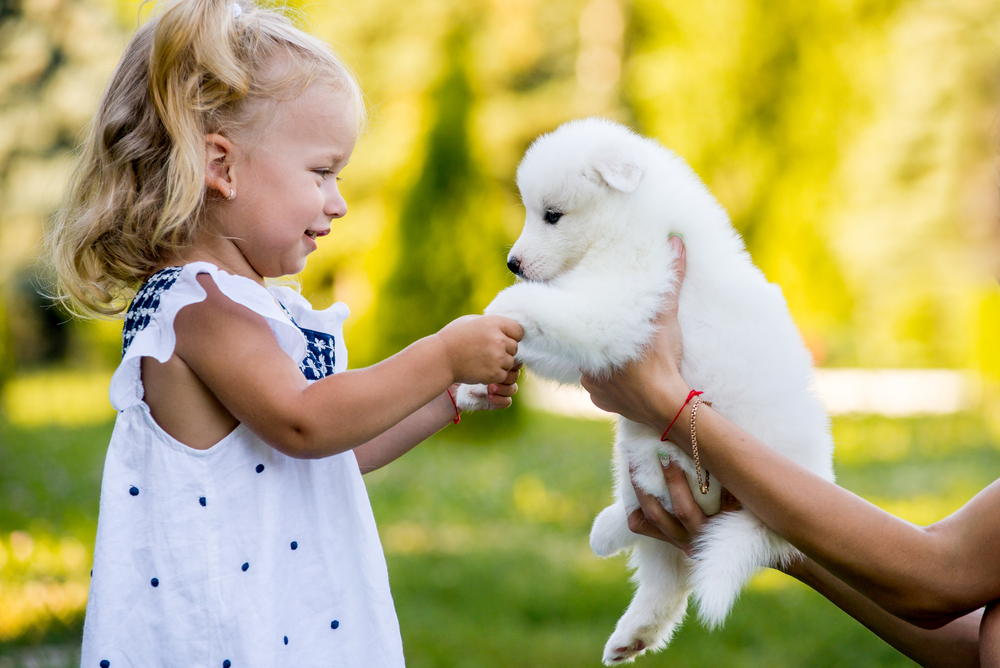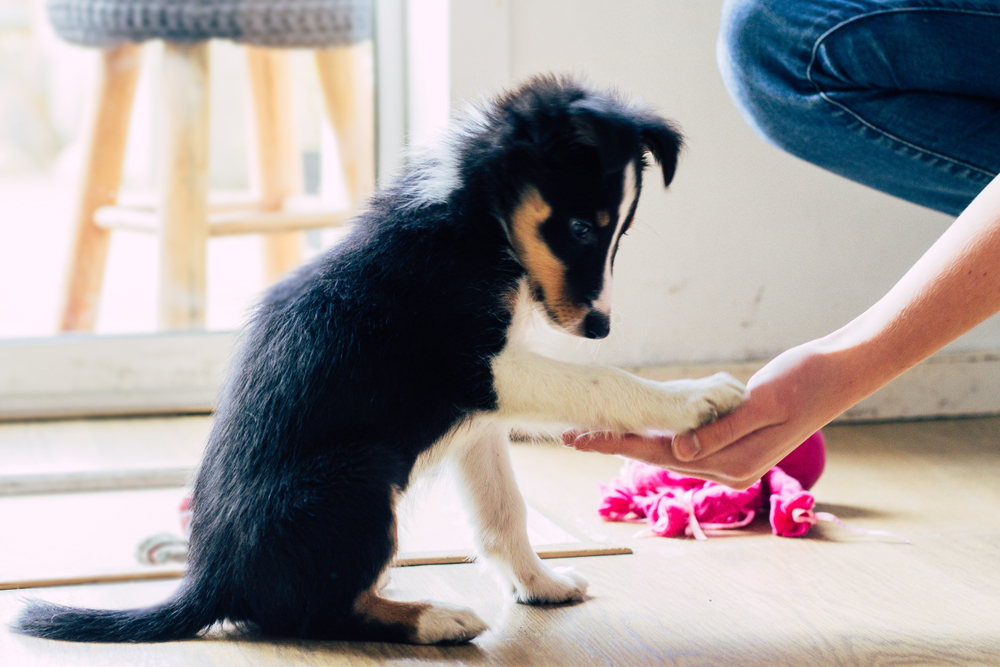Phone: +1 (903) 561-3142

Having a brand-new puppy is a source of tremendous joy. Puppies are energetic, enthusiastic, and loving. They remind us that happiness is free and life is wonderful. For new puppy parents, it can be easy to get swept up in the cuteness and forget about all the puppy parenting that your new fur baby depends […]
Having a brand-new puppy is a source of tremendous joy. Puppies are energetic, enthusiastic, and loving. They remind us that happiness is free and life is wonderful. For new puppy parents, it can be easy to get swept up in the cuteness and forget about all the puppy parenting that your new fur baby depends on you for.
To help you stay mindful of a few ways to ensure your puppy develops properly, Petland Texas has put together 5 tips for new puppy parents. Keep reading to find out how to be a great puppy parent for your loyal, loving, furry friend.

For young puppies, being inside a moving vehicle can be either fun or terrifying. The puppy’s reaction has a little to do with the actual experience of the car ride itself. But even more than the car ride, the puppy develops his attitude towards getting in the car and the car ride based on the destination.
When new puppy parents only take their puppies on car rides to go to the vet, then the puppies develop fears and are resistant to getting into the cars. This is because being handled by a veterinarian is generally an unpleasant experience, especially when puppies have to get vaccinated on their visits.
If the only reason that your puppy gets into a car is to go to the vet, then before long, your puppy might start fighting you and refuse to get into the car. He might even refuse to get into the car when you’re planning on taking him to the dog park, or on other fun trips!
You can prevent this negative association by making sure to take your puppy on short, fun car rides to enjoyable destinations like parks, hiking trails, and even your friends’ houses. This way, your puppy won’t associate car rides with negative experiences only, but will come to regard the car as neutral since sometimes he goes to fun destinations and other times he goes to not so fun destinations.
Have you noticed that your puppy has an aversion to you handling, holding, and touching his paws? This is normal.
A dog’s paws are responsible for delivering a wide range of sensory information to the dog about its environment. The pads of a dog’s paws are tough, leathery, durable, and able to withstand cold temperatures and rough terrain.
The tops of the paws, however, are extremely sensitive. The spaces in-between the paw pads are even more sensitive than the tops. When a dog goes through life without his paws being handled, and then someone tries to handle his paws for the purposes of clipping his nails, for example, the dog will have a severe reaction that could include growling, barking, or lashing out.
As part of your puppy’s long-term health care, you, a vet, and possibly a dog groomer will need to be able to handle your dog’s paws without his objection. In order to ensure that throughout your dog’s life he allows people to handle his paws, it’s important that you begin handling his paws regularly during his puppyhood. If you teach him through experience that having his paws touched and handled, and his nails clipped, is just a part of life, then he will allow it, which will make your life easier, as well as the work of the vet and groomer.

When it comes to puppy training, the term socialization refers to the process of introducing a puppy to others, whether those “others” are people or animals, and bringing him to new settings for the purposes of creating experiences that shape how he should behave.
Socialization should be positive, fun, and interesting for your puppy. But socialization isn’t only about having a great time. The key element of effective socialization is you, the pet parent. Your job is to provide your puppy with positive and negative feedback, according to how he is behaving with others, so that he learns what to do and what not to do.
Socialization is a major aspect of a puppy’s development, and it won’t happen on its own. Puppy parents need to structure daily time for socialization, and be mindful that the best period to teach your puppy about the world via socialization occurs within the first 16 weeks. After that, it can become difficult to properly socialize your puppy.
The good news is that your puppy will love meeting new people and animals! In the eyes of your puppy, there’s no such thing as “strangers,” only “friends he hasn’t met yet”! As you introduce your puppy to new people, children, and other domestic animals, he will develop the skills that he’ll use throughout the rest of his life when meeting and interacting with unexpected people.
Puppies are so cute! New puppy parents love discovering new, simple ways to bond with their fur babies! Sooner or later, it might cross your mind to allow your puppy to have a taste of the snack you’re enjoying. There’s nothing quite like bonding over the shared enjoyment of a tasty treat! But when it comes to offering your puppy a lick of your snack or giving your puppy table scraps, this will only end in disaster.
If you feed your puppy table scraps now or let him gobble up your table scraps, then later down the road you’ll end up with a dog that begs, making your personal snacking and meal times agonizing. Your dog might even steal food from the table when you aren’t looking.
For this reason, it’s important to instill positive habits and behaviors in your puppy now during his puppyhood, so that he knows how to behave properly for the rest of his life. Refrain from feeding your puppy table scraps and your snacks. Never “teach” him that he’ll benefit if he “begs” while you’re eating, meaning don’t reward his begging or whining by caving and giving him a bite of your food.
Instead, in addition to refraining from offering him tastes, bites, and scraps, we recommend that you also do not allow him to beg while you’re eating. Train him to have no interest in your food, and if he does, tell him to go and lie down, or otherwise separate himself from you. He will quickly learn that waiting, begging, and otherwise hoping for your food gets him nowhere, and he’ll stop this unwanted behavior altogether.

Training your puppy is an ongoing process. You could even consider it a lifestyle. As your relationship with your puppy deepens and grows over time, so too should the communication you share, which is established through training. Even adult age dogs are still learning new things, because they continue to have experiences that require them to exercise good behavior. When you regard puppy training and training your dog as an ongoing process that you’ll need to continue to learn about, you really can’t go wrong!
Our biggest tip in regard to training your new puppy is to never punish him. Punishments really don’t work, and can easily backfire, producing even worse behaviors in your puppy. Instead, we recommend that you use “positive reinforcements” to train your puppy how to behave. If and only if positive reinforcements fail, you can then introduce “negative reinforcements.” Negative reinforcements are not punishments. Let’s take a look…
New puppy parents should focus on positive reinforcement during puppy training. “Positive reinforcement” means rewarding your puppy when he behaves in the manner you want. This could be when he completes a command, such as sitting, staying, coming, or lying down. Or when he succeeds at long-term or complex commands, such as refraining from barking while a jogger runs down the sidewalk.
From your puppy’s perspective, the best reward is food. Canines are primal and highly value food. When a treat is gained as a result of doing any action, the puppy will repeat the action for the purposes of receiving more treats. Since your puppy views treats as “positive,” using treats to reinforce your desire for your puppy to display specific, good behaviors is called “positive reinforcement” in the dog training world.
Using positive reinforcement is the most effective puppy training method. It’s more effective than using negative reinforcement, though negative reinforcement is at times unavoidable.
Negative reinforcement is all about making sure your puppy knows that he will experience a negative consequence if he continues bad behavior. Just as positive reinforcement teaches a puppy to continue doing good behaviors, negative reinforcement teaches a puppy not to do certain behaviors.
From your puppy’s perspective, he actually cannot tell the difference between “right” and “wrong.” Many human rules are unnatural for dogs. And though your puppy doesn’t automatically know the difference between good and bad behavior, he is eager to please you. He also knows that treats are good, pats are good, and attention and affection are good. He wants to receive those from you, and when you provide those positive rewards after he behaves well, he’ll continue to behave well, as we explained in the last section.
There will be instances when your puppy is only doing undesired behavior, and so there’s no opportunity to reward positive behavior. In instances like this, you’ll have to proceed with a negative consequence so that your puppy associates a behavior with a consequence. By making this connection, he’ll learn that the behavior was bad, and he’ll stop doing it.
Those are our 5 tips for new puppy parents! And yet, we’ve only just scratched the surface when it comes to properly training your puppy and relishing in every bonding experience there is. From everyone at Petland Texas, we invite you to read other articles on our blog for more puppy training tips and tricks, as well as learn about how to keep your puppy happy and healthy in the long run. Our blog also features fun, informative articles about other lovable pets, such as cats, rabbits and other exotics, and reptiles and aquatics! Goldfish need love, too!